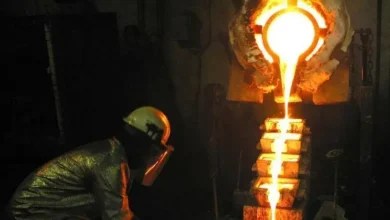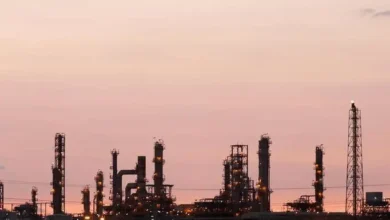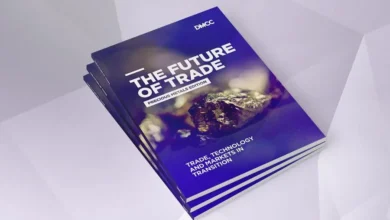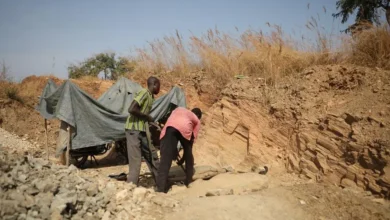
- The United States heavily relies on critical minerals sourced overseas, posing risks to its economic prosperity and national security.
- Increasing global mineral demand and escalating US-China competition necessitate greater supply chain resiliency through onshoring and ally-shoring.
- Some critical minerals are insufficiently produced by both the United States and its allies, making it necessary to develop a new model for securing mineral supplies.
- The US government should financially support US companies in signing offtake agreements
Critical minerals are necessary for key technologies, like superalloys in jet engines, making them critical to US economic prosperity and national security. Currently, the United States relies heavily on critical minerals sourced overseas, but rising global mineral demand and escalating US-China competition require increased supply chain resiliency, primarily through onshoring and secondarily through ally-shoring. However, for some critical minerals, neither the United States nor its allies—that is, countries with whom the United States has mutual defense treaties—have enough mining production and mineral reserves to meet long-term US demand. The United States, therefore, needs a critical mineral model beyond onshoring and ally-shoring to adequately supply its economy and military.

For example, the United States mines no antimony, while its allies produce 5,302 metric tons, which is about 20 percent of America’s annual antimony consumption of 27,000 metric tons. For reserves, the United States has 60,000 metric tons of antimony—enough to satisfy annual US demand for 2 years—while combined US and allied antimony reserves are 358,000 metric tons, which would satisfy US demand for 13 years if demand remains stagnant. However, the United States does not have access to all allied production because allies producing antimony consume some of it domestically and ship some to overseas customers. Moreover, US and allied reserves will not last as long because antimony demand is projected to increase.
Consequently, for some critical minerals, the United States cannot source adequate mineral supplies domestically and from its allies. The US government must, therefore, adopt a critical mineral model beyond onshoring and ally-shoring for securing sufficient mineral supplies for its economy and military. To meet US demand for critical minerals that domestic and allied supplies cannot fulfill, the US government should financially support US companies in (1) signing offtake agreements with trusted overseas mines, (2) acquiring existing overseas mines (or acquiring companies owning such assets), and (3) developing new overseas mines. Importantly, all the partially processed material from these mines must then be refined in the United States. Additionally, because the United States lacks experienced mining companies, junior and major mining companies from Canada and Australia should be eligible minority partners in US-led mining projects.
First, the US government should financially support US companies in signing offtake agreements with “trusted” overseas mines, which would be overseas mines owned by American or non-American mining companies. The US government would create a list of trusted mines, including in high-risk countries in Africa, Southeast Asia, and South America, and then offer cheap financing for US companies to offtake critical minerals from those mines. At a minimum, trusted mines must not have slave labor, forced child labor, and Chinese involvement. This “Trusted Mine Program” would be similar to the US Department of Defense’s Trusted Foundry Program for sourcing domestic integrated circuits, but instead for sourcing overseas mineral ore.
This proposed American tactic is similar to an existing Chinese supply chain tactic—absent the trusted mine list. To help satisfy domestic demand, Chinese companies with state support will source critical minerals from mines outside China. For example, Chinese state-backed Shenghe Resources buys 90 percent of the rare earth concentrate produced at Mountain Pass mine in California, which is owned by US company MP Materials. The US government cannot wait 7 to 10 years for mine production to come online domestically or in allied countries to meet US demand. As a short-term bridge supply, the US government should finance offtake agreements between US companies and trusted mines for critical minerals that it cannot sufficiently source domestically and from allies.
Second, the US government should financially support US companies in acquiring existing overseas mines or companies owning such assets. Existing mines have proven production, while new mines have prospective production; acquiring existing mines is thus less risky than developing new mines. To reduce acquisition risk for US companies as well as strengthen bilateral relationships for the US government, the US government should facilitate mine acquisitions by working with host country governments in (1) identifying possible mines for acquisition, (2) offering loans to US mining companies for mine acquisitions, and (3) establishing dispute resolution processes in case of disputes between host country governments and US mining companies.
The US government can take lessons from China’s government on mine acquisitions. In the Democratic Republic of the Congo (DRC) in 2016, the Chinese government provided China Molybdenum—now called CMOC—with billions of dollars in financing to buy the Tenke Fugurume mine, the second largest DRC cobalt mine, from US company Freeport-McMoRan. For the US government, it should mainly provide financing to US companies acquiring mines that reduce US import dependence on China and Russia. These mines would include mines producing, for example, rare earth elements.
Third, the US government should financially support US companies in developing new overseas mines. Securing billions of dollars in upfront capital to develop a new mine, especially in high-risk countries, is challenging. Therefore, the US government would play a much-needed role by providing affordable upfront capital to US companies developing overseas mines, including by acquiring companies with prospective mining projects. In this financing arrangement, a US company would identify a potential mining project and then apply for financing from the US government, which would decide whether and to what extent to finance the project. Ideally, the US government would subsequently work with the host country’s government to secure the necessary mining concessions and establish a dispute resolution process.
The US government can learn from China about this supply chain tactic too. Chinese companies with state backing have often purchased overseas mines for commercial development. For instance, in the DRC in 2020, Chinese state-backed CMOC acquired the Kisanfu project, “one of the largest and purest untapped reserves of cobalt in the world,” from Freeport-McMoRan.
CMOC is now planning to invest $1.8 billion to develop the mine. Chinese companies have also frequently used this tactic to secure overseas lithium supplies. In the American case, the US government should only target overseas mine development for minerals where the United States lacks sufficient domestic reserves to satisfy US demand, in order to avoid financing overseas mines when US mines can be financed instead.
Importantly, all the partially processed material from the mines in this sourcing model must be refined in the United States. This critical mineral model will then indirectly and directly secure America’s critical mineral supplies. Signing offtake agreements with trusted overseas mines indirectly secures upstream supplies for downstream US companies, while acquiring existing overseas mines and developing new overseas mines directly secures upstream critical minerals for downstream US companies. Furthermore, financial support for offtake agreements with trusted mines incentivizes US companies to source minerals from non–Chinese-owned mines, and financial support for the acquisition and development of overseas mines provides much-needed, affordable capital to US mining companies.
In conclusion, critical minerals form the bedrock of the US economy and military. Amid rising global mineral demand and escalating US-China competition, the United States must strengthen its critical mineral supply chain through onshoring and ally-shoring. For some critical minerals, however, the United States and its allies lack mining production and mineral reserves to satisfy long-term US demand. Thus, the United States must secure additional critical minerals beyond its borders and the borders of its allies. To start, the US government should financially support US companies in (1) signing offtake agreements with trusted overseas mines, (2) acquiring existing overseas mines (or acquiring companies owning such assets), and (3) developing new overseas mines.
As demonstrated by supply chain initiatives like the Minerals Security Partnership and mineral-related memoranda of understanding with countries like Zambia, the US government clearly understands the need to source critical minerals from non-traditional US partners. But the US government will not secure these minerals for the long term without deploying capital to US companies for overseas mineral offtake, mine acquisition, and mine development. In other words, the United States must take a page out of China’s critical mineral model handbook—and put its money where the minerals are.
Shubham Dwivedi is a Faculty Fellow at Georgetown University’s Science, Technology, and International Affairs (STIA) Program.
Gregory D. Wischer is Executive Vice President at Westwin Elements, an American company seeking to build the only nickel and cobalt refinery in the United States.




